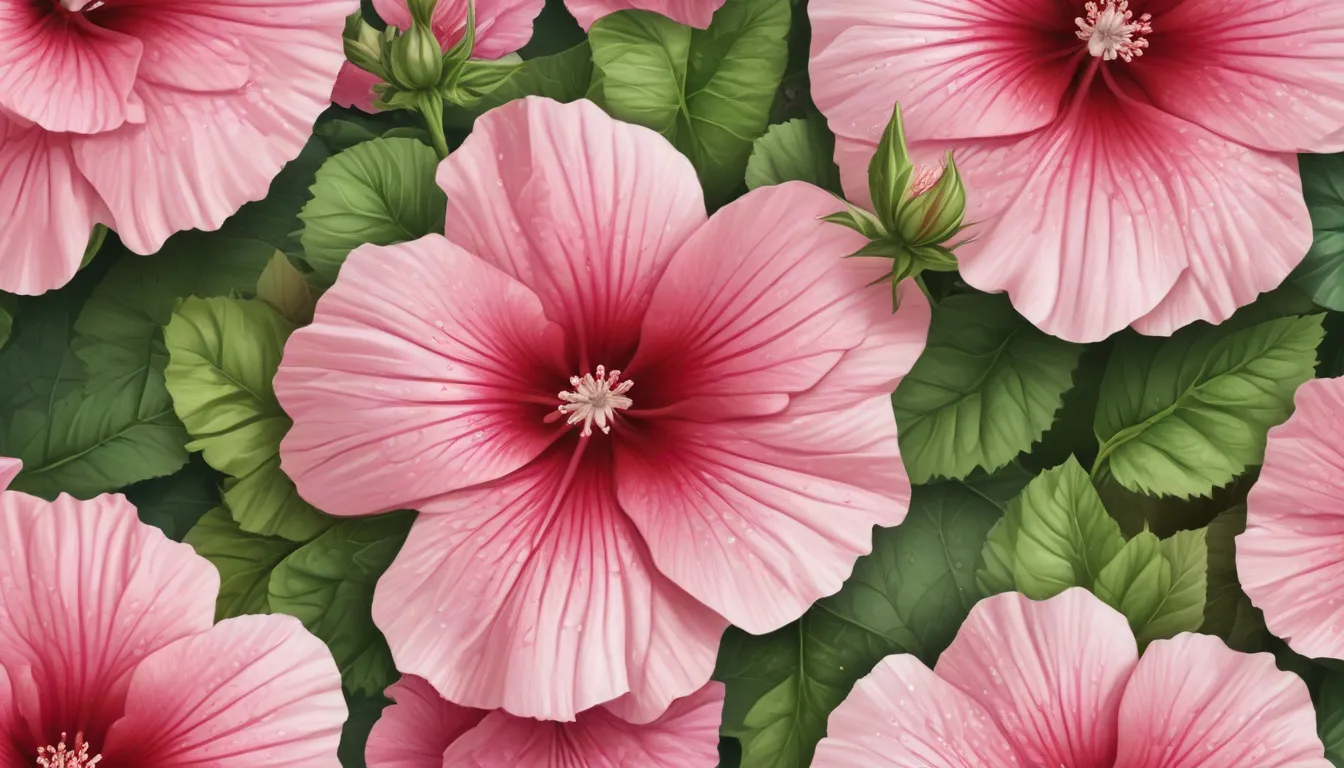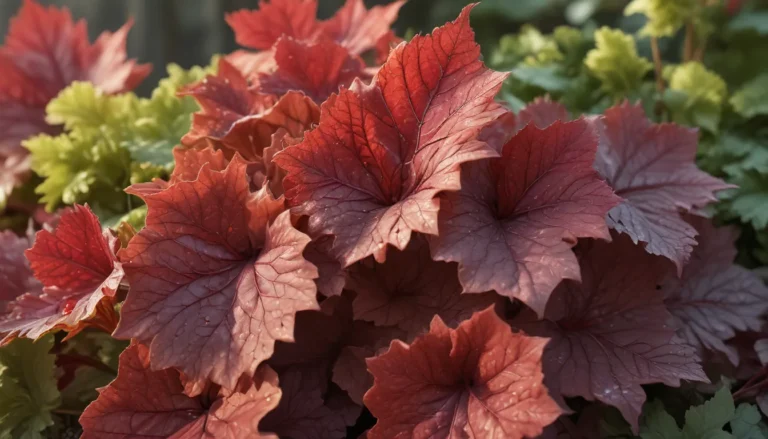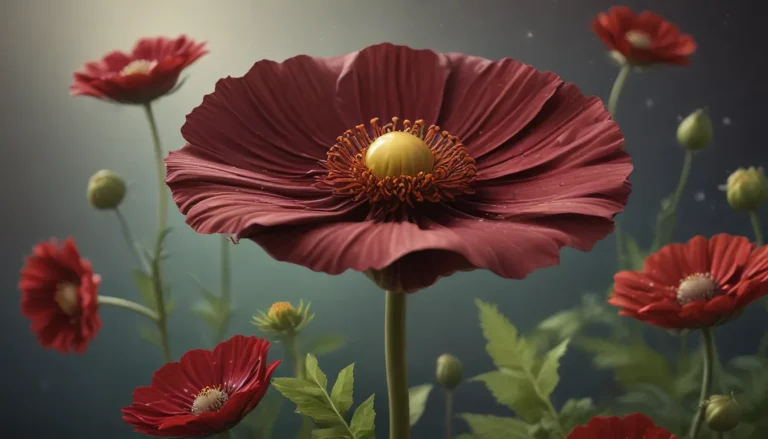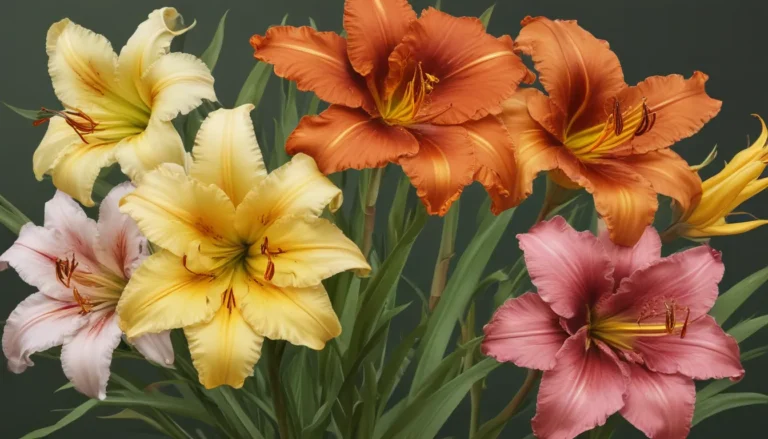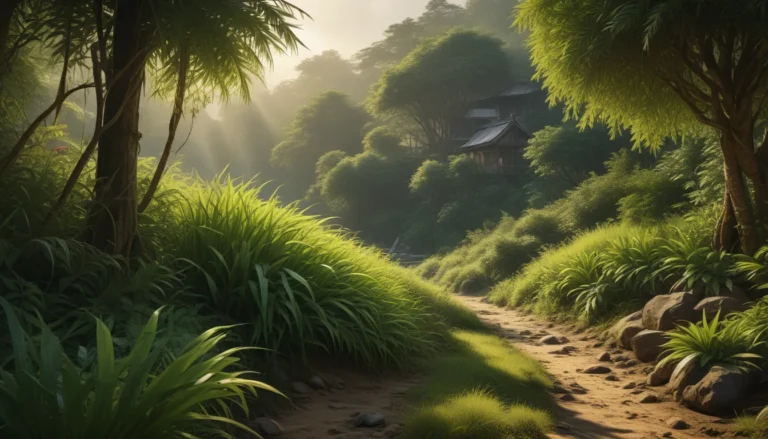The pictures we use in our articles might not show exactly what the words say. We choose these pictures to make you interested in reading more. The pictures work together with the words but don’t take their place. The words still tell you the important facts.
Are you captivated by the allure of nature's wonders? Rose Mallow, also known as Hibiscus moscheutos, is a breathtakingly beautiful flowering plant that will leave you in awe. From its stunning appearance to its versatile uses, Rose Mallow is a standout in the world of plants. Let's delve into 15 astounding facts about this remarkable plant that will deepen your appreciation for its beauty and significance.
The Allure of Rose Mallow
Rose Mallow, a member of the Malvaceae family, boasts large and vibrant blossoms that come in various colors like pink, red, white, and purple. Its stunning appearance makes it a favorite among gardeners and plant enthusiasts looking to add a splash of color to their outdoor spaces.
A Native Gem of North America
Originally hailing from North America, Rose Mallow thrives in wetlands, marshes, and along riverbanks. Its adaptability to various environments has also made it a beloved garden plant, enchanting all who encounter its beauty.
Thriving in Moist Soil
This perennial plant thrives in moist soil conditions, making it an excellent choice for gardens with high humidity or areas prone to occasional flooding. Its resilience in challenging conditions adds to its appeal for home gardeners.
Pollinator Paradise
The large, showy flowers of Rose Mallow attract pollinators such as bees, butterflies, and hummingbirds. These essential creatures play a vital role in the plant's reproduction, making Rose Mallow an invaluable asset to any garden ecosystem.
Edible and Medicinal Marvel
Beyond its visual appeal, Rose Mallow offers edible and medicinal properties. The leaves can be brewed into herbal teas, and the flowers are sometimes utilized in traditional medicine for their therapeutic benefits, adding a touch of practicality to its beauty.
Blooming Delight
Rose Mallow boasts an extended blooming season from summer to early fall, allowing you to enjoy its stunning flowers for an extended period. Its longevity adds a burst of color to your garden throughout the seasons.
Drought-Tolerant Diversity
Certain varieties of Rose Mallow exhibit drought tolerance once established, making them suitable for regions with limited water availability. Their ability to thrive in challenging conditions adds to their appeal for gardeners seeking low-maintenance options.
Multipurpose Marvel
With its tall growth habit and large, dense leaves, Rose Mallow can provide shade and privacy in your garden, acting as a natural screen. Its versatility in serving multiple purposes makes it a valuable addition to any outdoor space.
Symbol of Love and Beauty
Throughout history, Rose Mallow has been associated with love and beauty. Its enchanting appearance and vibrant colors make it a popular choice for romantic gestures and special occasions, adding a touch of romance to your garden.
Landscaping Elegance
Rose Mallow can be a versatile addition to your landscape design, serving as a focal point in flower beds, a border plant, or a stunning addition to large containers. Its flexibility in landscaping enhances the aesthetic appeal of any outdoor setting.
Resilient in Varied Climates
Rose Mallow can adapt to a wide range of climatic conditions, thriving in both hot and cold regions. It can withstand freezing temperatures and grows well in zones 4 to 9 on the USDA Hardiness Zone Map, making it a versatile choice for diverse environments.
Erosion Control Champion
Thanks to its extensive root system, Rose Mallow excels in erosion control, stabilizing soil and preventing erosion in sloping terrains or near bodies of water. Its ecological benefits extend beyond its visual appeal, contributing to environmental sustainability.
Wildlife Wonderland
Planting Rose Mallow in your garden creates a welcoming habitat for various wildlife species, providing food and shelter for birds, insects, and small mammals. Its role in fostering biodiversity adds to its significance in enhancing the ecosystem.
Propagation Prowess
Rose Mallow is easy to propagate from seeds or through division, allowing you to expand your garden or share the beauty of this flowering plant with others. Its accessibility in propagation makes it a practical choice for gardeners seeking to grow their botanical collection.
In Conclusion
Rose Mallow, with its captivating beauty and versatile uses, stands out as a remarkable flowering plant that enriches any garden or landscape. Its intriguing facts, from its size and growth habits to its cultural significance, highlight its unique charm and importance in the world of plants. Whether you're an aspiring gardener or a seasoned plant enthusiast, exploring these astounding facts will deepen your admiration for the wondrous Rose Mallow.
FAQs Answered
- How tall does rose mallow grow?
-
Rose Mallow can reach an impressive height of 6 to 8 feet, serving as a striking focal point in any garden.
-
What colors do rose mallow flowers come in?
-
Rose Mallow flowers display a diverse range of colors, including shades of white, pink, red, and bicolor varieties.
-
Are rose mallow flowers edible?
-
Yes, rose mallow flowers are edible and can be incorporated into salads, teas, or culinary creations for a delightful touch.
-
How long does it take for rose mallow to bloom?
-
Rose Mallow typically blooms from mid-summer to early fall, with each flower lasting up to one day in its vibrant glory.
-
Can rose mallow tolerate drought conditions?
-
While hardy, rose mallow benefits from regular watering despite its ability to withstand drought conditions for optimal growth.
-
Does rose mallow attract pollinators?
-
Indeed, Rose Mallow's nectar-rich blooms attract a variety of pollinators, including bees, butterflies, and hummingbirds.
-
Can rose mallow be grown in containers?
-
Yes, rose mallow can thrive in containers as long as the pot accommodates its robust root system for optimal growth.
-
Does rose mallow have any medicinal properties?
-
Rose Mallow has been utilized in traditional medicine to address respiratory conditions, inflammation, and support overall well-being.
-
How long does it take for rose mallow seeds to germinate?
-
Rose Mallow seeds typically germinate within 7 to 21 days, depending on growing conditions and temperature for successful propagation.
-
Is rose mallow a native plant?
- Yes, Rose Mallow is native to North America, particularly thriving in wetland habitats like marshes, swamps, and riverbanks for its natural growth.
Unveil the Beauty of Rose Mallow
Rose Mallow's enchanting beauty and versatility make it a must-have in any garden landscape. If you enjoyed discovering the intriguing facts about Rose Mallow, why not expand your botanical exploration to unearth more about other captivating perennial plants like Brunnera? Immerse yourself in the realm of flora and uncover a treasure trove of fascinating plant facts that will deepen your admiration for the wonders of nature.
Unparalleled Uniqueness of Rose Mallow
Our dedication to providing accurate and engaging content resonates in every fact we share. Each insight is contributed by real users like you, ensuring a diverse and credible collection of information. With our meticulous editorial review process, you can trust that the facts we present are not only captivating but also reliable. Embark on a journey of discovery and learning with us, as we continue to deliver quality content that enriches your botanical knowledge.
Illuminate your garden with the mesmerizing beauty of Rose Mallow, a plant that not only captivates the eye but also enriches the soul with its unique charm and versatility. Dive into the world of botanical wonders and uncover the allure of nature's masterpieces waiting to be explored and admired.
